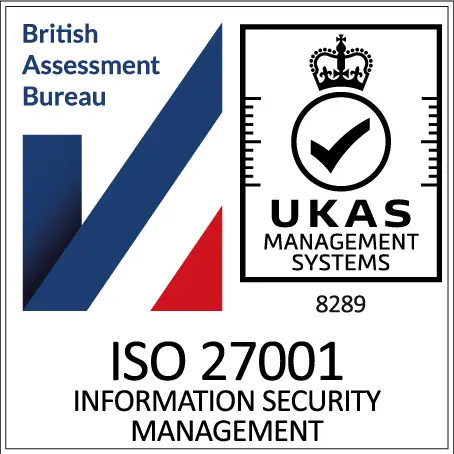
We all crave flexibility. That’s why online and remote learning are so popular. Yet, many learners still value the hands-on engagement and interactive nature of traditional classroom sessions. This is where hybrid learning steps in, offering the best of both worlds.
The workplace has already embraced this balance. Rather than heading to the office every day, many workers now favour a hybrid setup that gives them more choice and freedom. It’s only natural that learners would seek similar autonomy in their educational experiences.
But, what exactly is hybrid learning and how does it differ from blended learning? And once you’re set up, how can you bridge the gap between in-person and remote learners? We’ll explore these questions and many more throughout the course of this article.
We’ll kick things off by looking at how work, learning, and education have transformed over the past five years. Ready to become a hybrid hero? Then let’s get started…
Hybrid Work: The New Normal
Hybrid work is now mainstream. This flexible employment model lets workers divide their time between remote work (often from home) and traditional office-based work. Its success hinges on employees’ ability to effectively work from either location.
According to Gallup, half of full-time US workers have remote-capable roles. Of these jobs, 26% are fully remote, 55% are hybrid, and 19% work on-site. Over here in the UK, 63% of employees work remotely, either all or some of the time.
Talk about a turnaround! Back in 2019, before the world changed, just 4.7% of employees worked from home. Now? It’s clearly the norm. But what do employees think about it all? Well, as Oyster puts it:
“Five years on from the start of the pandemic, hybrid work seems to have emerged as the frontrunner, both in terms of actual practice and employee preference”.
- Gallup tells us 60% of employees prefer a hybrid work setup.
- Buffer says 98% of employees prefer to work remotely (at least some of the time).
- Statista reveals that just 1% of IT employees want a fully office-based job.
It’s hard to reconcile this data with the ongoing return-to-office push we’re currently witnessing (think Amazon, JPMorgan Chase, Dell, etc.). Indeed, according to a KPMG survey, 83% of CEOs expect a full return to office within the next three years.
Despite this, the world of work is clearly forever changed. Meanwhile, education’s been keeping pace. For instance, 28% of courses are now hybrid, up from a tiny 4.1% in 2019.
In other words, these past few years have seen us scrambling to make our lives more location-proof. That’s why hybrid learning is now so in vogue, and why it secured a spot on our 2025 L&D trends hotlist. But, what exactly do we mean by hybrid learning?
What is Hybrid Learning?

Research for this article quickly revealed that hybrid learning’s definition and place within the learning landscape are still widely misunderstood. Most definitions focus on mixing modalities (i.e. online and classroom learning), but this alone fails to create a distinct model.
After all, we also have to consider hybrid learning’s close relative, blended learning (more on this shortly). Instead, to really grasp hybrid learning, we need to spotlight learners’ power to pick their participation mode during a live event. So, here’s our take:
Hybrid learning is a flexible educational setup where learners can complete a learning experience through online or remote learning, in-person classroom instruction, or a combination of both. In other words, their location should never hinder their ability to make progress.
Imagine, if you will, a live workshop happening in a physical space. In a hybrid learning setup, some team members will attend in person, while others will join remotely through a video conferencing platform. As a result, geographical differences dissolve and everyone has access to the same learning offering.
While online tools can definitely augment traditional learning in this setup (think additional materials, session recordings, online discussions, and so on), the key to a true hybrid experience is learners’ ability to participate effectively, regardless of where they are.
Hybrid Learning vs Blended Learning
You’re probably thinking, ‘hybrid learning? Isn’t that just blended learning by another name?’ Well, there are some obvious similarities. After all, both rely on a mix of different learning modalities. However, they are distinct learning approaches.
Blended learning emphasises the strategic use of technology to supplement and enrich classroom instruction. It typically involves a planned combination of face-to-face learning with online modules, discussions, assessments, and so on.

Consequently, learners typically need to participate in either, or both, the classroom or online parts. This differs from hybrid learning’s goal of a consistent experience for everyone, no matter where they happen to be.
Simply put, blended learning combines classroom and online instruction, while hybrid learning offers the choice: the classroom, online, or a mix. Still not sure? Check out our handy scale below:

| Classroom Learning | Blended Learning | Hybrid Learning | Remote Learning |
| Learners receive face-to-face instruction and interaction conducted entirely within a physical classroom. | Learners participate in traditional classroom-based learning, while also accessing supplementary online materials. | Learners have the option to attend learning events either in-person or remotely, prioritising accessibility and flexibility. | Learners complete all instruction online, eliminating in-person components and focusing on virtual delivery. |
The Benefits of Hybrid Learning
Each learning approach has its pros and cons. For instance, classroom learning offers the potential for hands-on experience and strong collaboration. Remote learning, on the other hand, removes location barriers and expands access.
In a sense, hybrid learning seizes upon the advantages of both approaches, while mitigating some of their drawbacks. After all, learners can select the approach that works best for them in each case. As such, we’d summarise the benefits of hybrid learning as follows:
- Fabulous Flexibility: Learners choose their learning environment, removing classroom restrictions but still keeping that option open. This improves accessibility and accommodates different learning preferences. Consider this: Forbes found that 82% of students want at least some of their learning to be online, but only 41% want a fully online experience. Hybrid learning is the only model that pleases everyone.
- Awesome Autonomy: Hybrid learning hands the reins to your learners and giving them control has incredible effects. For example, studies show that 79% of autonomous employees are more engaged than their less autonomous counterparts.
- Enhanced Engagement: Guess what happens when you offer choice and convenience to your audience? You’ll boost both learner uptake and satisfaction scores. Indeed, recent studies show a 66.7% satisfaction rate among hybrid learners. What’s more, 73% of teachers agree that multi-modal learning increases engagement.
- Better Balance: Providing learners the option to learn online, rather than in the classroom, helps them to balance education with work, family, and other commitments. After all, it reduces the time and energy needed for commuting, without stripping them of a valuable option entirely.
- Cost Cutting: Despite requiring physical space, hybrid learning reduces your classroom needs and overall learning footprint, thereby lowering your costs. To achieve this, you may need to implement a booking system for classroom sessions, allowing for better space management.
Given these cumulative advantages, it’s easy to imagine the sort of impact hybrid learning could have on your organisation. Just look at professor Ian Walmsley’s words, following Imperial College’s 84% satisfaction score:
“Hybrid learning works. It costs serious money, but the potential impact — and wider reach — is thrilling. Universities must change to deliver an education fit for the future.”
The same holds true for workplace learning.
The Challenges of Hybrid Learning
Of course, hybrid learning isn’t all smooth sailing. There’s a reason why it has not yet been universally adopted. Indeed, building a good hybrid learning experience takes real work. That’s why 86% of teachers agree it places additional demands on them.
After all, your teachers and instructors now have two distinct audiences to juggle: those in the classroom and those joining remotely. Creating a sense of community and connection across these groups is no small task.
Many instructors will require additional training to effectively pull it off. Following this, communication will have to be excellent to keep all learners informed and engaged. What’s more, in some cases, your courses may need to be redesigned to consider both audiences.
Despite this, hybrid learning remains a worthwhile pursuit. With dedication, these obstacles can be overcome. In the next section, we’ll explore practical strategies for implementing this approach within your organisation.
How to Implement a Hybrid Learning Approach

So, you’re thinking about moving to hybrid learning?
Awesome! Shifting from a classroom or blended setup takes a bit of planning, but trust us, it’s worth it. The goal is to create a dynamic, accessible, and effective learning environment for your entire team. So, here’s our tips to get started:
- Assess Your Needs: Everything begins with your learning objectives. Think about what you’re trying to achieve and how this may be impacted by a move to hybrid learning. Then seek to understand your learners’ needs, preferences, and access to technology. You’ll also need to assess your current tech infrastructure, learning materials, and instructor capabilities. That way you’ll know exactly what you’re getting into.
- Configure The Tech: With needs established, the next step is selecting the right technology to support your hybrid learning programme. The key here is to ensure equitable access for all learners, regardless of where they are in the world. To achieve this, you’ll want to explore video conferencing platforms, collaboration tools, learning management systems, and more.
- Update Your Courses: Following this, it’s time to give your courses a hybrid makeover! You’ll need to adapt your existing content or create new materials that are suitable for both in-person and online delivery. Where interactive activities or discussions take place, consider how both audiences can be involved. Make sure everyone gets a seat at the learning table.
- Train Your Instructors: With your technology and content in place, you’re now ready to bring your instructors into the fold. Ensure they are trained on how to effectively facilitate hybrid learning, including using online tools, managing two distinct audiences, and using new teaching methods. Remember, this is a big change and they may need additional support moving forward.
- Launch a Pilot: If you’ve completed all the steps above, then you’re ready to get started. But don’t jump in headfirst yet. Start with a small-scale pilot programme to test and refine your hybrid learning approach. This gives you an opportunity to stress test your tech setup and smooth out any bumps in the road before you go big. Think of it as your learning dress rehearsal.
Further Hybrid Learning Considerations
Previously, we’ve considered the practicalities of a hybrid learning setup. But, what can you do to make sure your programme really shines? Want to get those engagement levels soaring? Well, we’ve got some extra tips up our sleeve:
- Communicate Clearly: Big change requires brilliant communication. Establish clear communication channels and protocols for learners, instructors, and your support staff. You’ll also want to spend some time highlighting the benefits of this new approach, both for your organisation and for your learners.
- Create a Community: One of the trickiest parts about a hybrid setup is unifying two distinct audiences (in-person and online). Wherever possible, foster a sense of community and connection among both sets of learners. We’d recommend kicking things off with a virtual meet-and-greet session before any classroom instruction begins. That way, your remote learners aren’t just a voice on a screen, they’re real people!
- Expand Your Tools: Sure, you’ll need a reliable video conferencing tool and a way for everyone to connect. But why stop there? For instance, you may want to explore shared digital whiteboards for brainstorming, online discussion forums, quiz tools, and even virtual reality spaces (more on this shortly).
- Analyse Your Data: You’ll want to keep an eye on how both audiences are doing. This means tracking engagement and progress for both your in-person and online learners. Make sure you can easily monitor attendance, who’s joining in, and who’s getting their assignments done. This data can then help you to identify areas for improvement.
Finally, don’t forget to seek out feedback from your learners, instructors, and stakeholders. After all, it’s unlikely that you’ll get everything right the first time. Use their suggestions to make adjustments to your courses, technology, and delivery methods.
As a result, you’ll keep making your hybrid learning programme better, bit by bit!
The Future of Hybrid Learning

Unlike classroom learning, or even blended learning, hybrid learning is still a relatively new idea and approach. Its popularity surged in large part due to the pandemic and was supported by the rise of video conferencing tools. Consider, for instance, that Zoom’s sales went up by 370% in 2020.
As hybrid learning matures, we can begin to look at how it might evolve in the future. In particular, technological advances have exciting potential, particularly when it comes to bridging the gap between in-person and remote learners.
Consider, for instance, the possibilities that immersive learning experiences like virtual reality (VR) could bring. After all, the metaverse can forge digital classrooms that learners can join from anywhere in the world. These digital spaces are likely to be the hybrid learning environments of the future.
Fold in AI support agents, language translation tools, and advanced analytics, and it’s clear that the future is bright for this learning approach. Those who capitalise on it will be well-positioned to provide effective and engaging learning experiences for all learners.
Final Words
Hybrid learning isn’t just about mixing classroom and online instruction. Instead, the focus is on catering to the evolving needs of modern learners and giving them more choice. This is what makes it the most flexible and learner-centric approach available.
Building a successful hybrid learning programme means creating a space that’s both flexible and fun, and where everyone feels like they belong. This should be true whether they’re there in the room or joining from their couch.
Of course, this won’t be a walk in the park. Embracing hybrid learning is a journey of continuous adaption and improvement. You’ll also need to be supported by the right technology. But, if you can pull it off, your learners will thank you.
So, why wait?
Thank you for reading. Hybrid learning is just one of many viable learning approaches. To get the full breakdown, alongside 165 top tips, download the ‘L&D Professional’s Handbook’ now.









